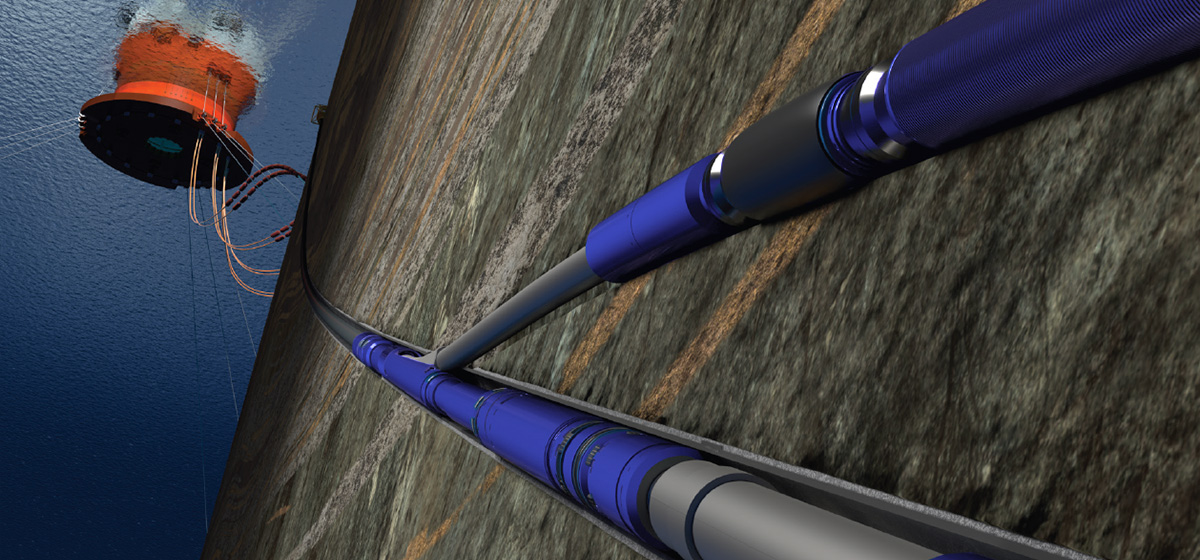RapidX
TAML 5 high-strength, hydraulic-sealed multilateral junction

Embodied Carbon
Generated Carbon
Improve access to reserves for new developments or retrofit applications
Multilateral well completions maximize reservoir contact per well, reducing the number of wells required. Having fewer, more ideally targeted wells simplifies surface and subsea infrastructure designs and reduces field development costs and environmental impact.
RapidX TAML 5 high-strength, hydraulic sealed multilateral junction delivers maximum reservoir contact, faster time to production, and more flexibility with lower capex as compared with conventional single-bore well development or sidetracks after plug and abandonment (P&A).
Its simpler installation and more robust, field-proven technology reduce operator risk, and its large bore enables higher production rates as compared with conventional multilateral systems, especially in retrofit applications.


Decarbonize Your Operations
RapidX and RapidXtreme multilateral junctions are part of our Transition Technologies portfolio, offering collaborative full-field development solutions to sustainably drive high performance for decreased carbon impact. They maximize the value of existing infrastructure and reduce total well count, simultaneously minimizing emissions and maximizing business benefit.
Learn more
Vår Energi Saves Millions with Industry’s First Subsea Retrofit Multilateral Wells
Without adding additional infrastructure, RapidX junctions deliver access to up to 8,000,000 bbl of oil from subsea reservoirs with minimal CO2 emissions impact.
READ CASE STUDYSupport industry carbon intensity reduction goals―and your sustainability KPIs
Multilateral well construction and completions reduce generated and embodied carbon during field development. Drilling rigs that are used to drill the boreholes represent sources of generated carbon of varying intensity based on their power source and consumption. Steel casing and cement that are used to construct wells represent sources of embodied carbon of varying intensity based on their source of origination.
By targeting accretive reserves with a multilateral junction versus drilling a new well or sidetracking a poorly placed well, operators avoid carbon-generating activities by eliminating rig time―in some cases, 10 days or more. Operators reduce embodied carbon sources by eliminating procurement and installation of multiple steel casing strings and cement to surface; instead, they initiate the multilateral junction casing exit deep in the producing well. Operators further reduce embodied and generated carbon sources in the subsea environment by eliminating procurement and installation of additional subsea production system components, including subsea umbilicals, risers, and flow lines (SURF) that require specialized subsea construction vessels.
The carbon savings equates to 5 to 55 million miles [8 to 89 million km] driven by an average passenger vehicle, as determined using a US EPA greenhouse gas equivalencies calculator.
